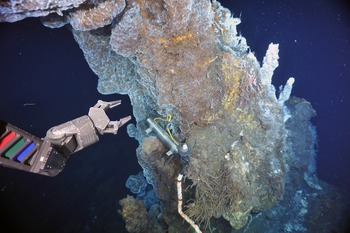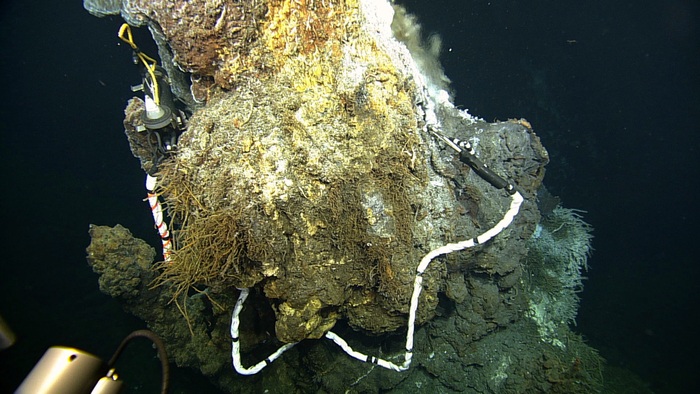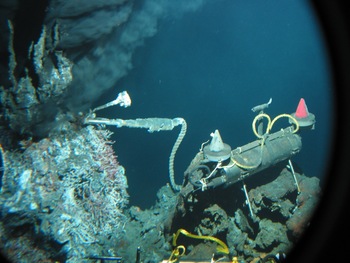
A resistivity-temperature probe, developed by Dr. Marv Lilley at the University of Washington, was deployed into a 270°C actively venting orifice on the chimney called Escargot. Resistivity is an analogue for chlorinity. Some of the vents in the International District are boiling, causing release of very gas-rich, low-salinity fluids. This instrument, recovered on ROPOS dive 1638, was deployed on a small ledge on the structure a few weeks previously with power provided by batteries in the titanium housing. The orange-white taped cable leads to the wand that is inserted into the chimney (not shown in this image). The white, feathery material on the outside of the chimney is filamentous bacteria, supported by low-temperature diffuse fluids that waft up the side of the chimney. Photo credit: NSF-OOI/UW/CSSF
Known as the "Res Probe," this novel seafloor instrument is designed to go inside the "throats" of high temperature (up to 480°C) black smoker chimneys to measure the resistivity and temperature of the hydrothermal vent fluids. Resistivity is an analog for chlorinity, measuring the "saltiness" of the vent fluids. Many of the structures at Axial Volcano emit boiling fluids, as reflected by their high temperature and low chlorinity.
During the VISIONS'14 Cruise, a resistitivy-temperature instrument was installed at the hydrothermal vent known as 'Escargo', named because the morphology of the chimney is reminiscent of a snail. A similar instrument has been installed at a vent (Grotto) in the Main Endeavour hydrothermal field for over a year, as part of the Ocean Networks Canada cable array.



